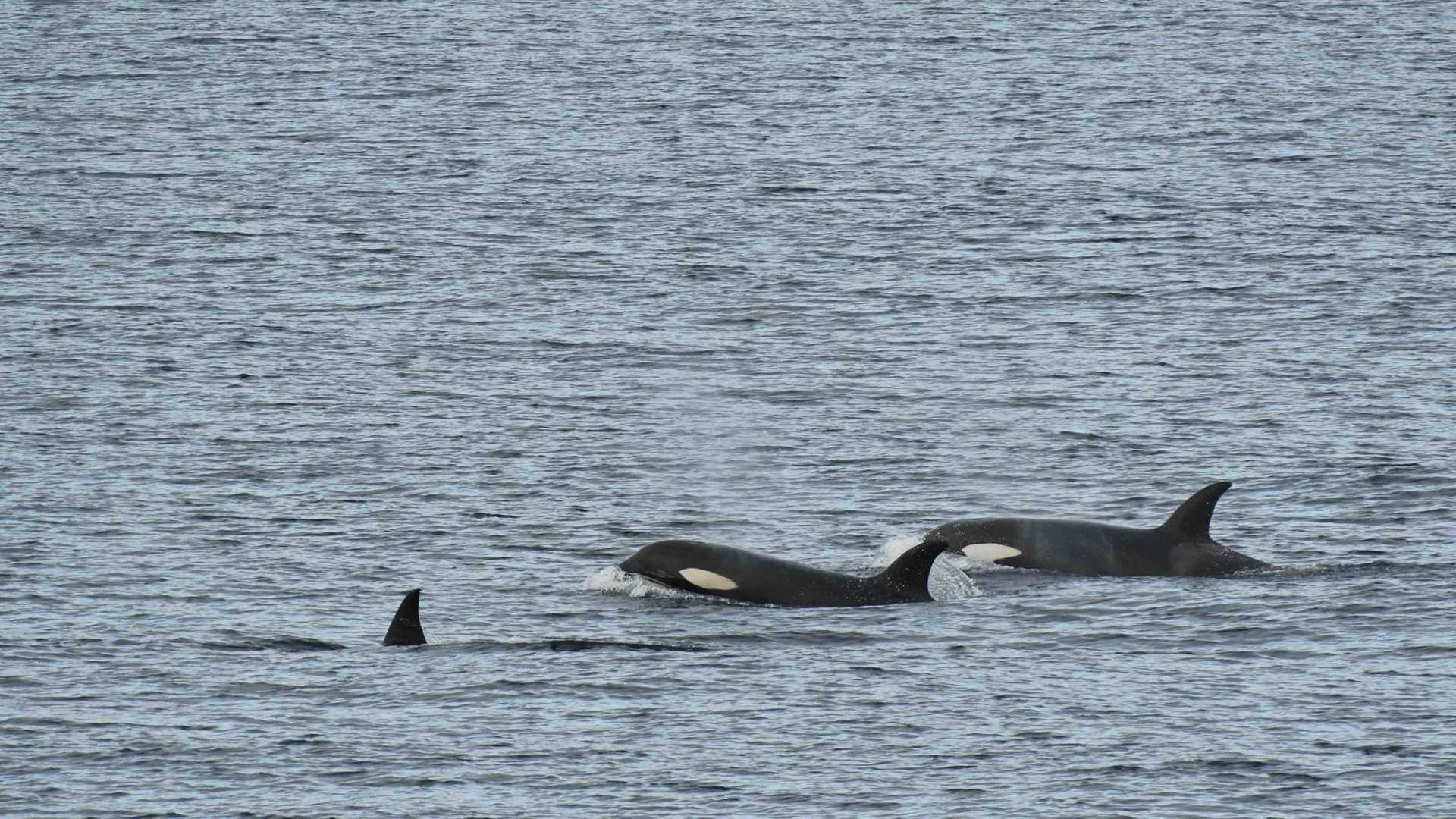This morning we were off to an amazing start. Within 15 minutes of beginning our search for cetaceans, as we navigated along the northern shore of Isabela Island I spotted through my binoculars, far ahead of us, the tall black telltale fin of a large male orca! I made an excited ship-wide announcement to make sure no one was still sleeping and guests and crew hurried out on to the decks. There were seven whales: a big male, two large females, and four smaller animals. Three of the smaller whales played for a while, diving back and forth under the ship, and we raced from the port rail to the starboard rail in order to see them surface and blow! Our first mate, Giovanny, who was at the helm of National Geographic Islander, carefully approached the male and two females, and we had a good look as they crossed closely in front of our bow and then dove deep off our port side.
The second half of the morning we spent on a Zodiac cruise along the dramatic cliffs at Punta Vicente Roca, at the chin of this seahorse shaped island. We spotted our first flightless cormorants and several penguins. The late morning snorkeling in the cold but calm bay was off the charts. Where else in the world can you snorkel with flightless birds (penguins and cormorants), reptiles (sea turtles and marine iguanas), marine mammals (sea lions), and schools and schools of colorful fish?
As we were finishing a delicious buffet lunch and just about ready to take a siesta, the second mate Isaac radioed me “ballenas!” There were five blue whales and we got a very close look at them as they floated and spouted off our bow. We also had a quick look at a smaller Bryde’s whale that was feeding among the much larger blues. In the later afternoon, we disembarked on the island of Fernandina, one of the most pristine tropical islands in the world. Here, there is an almost overwhelming amount of wildlife. Thousands of marine iguanas, flightless cormorants, charming and ubiquitous sea lions of course, and bright red Sally lightfoot crabs. To complete this absolutely fantastic day, we navigated south to view the last small crater on the slopes of Volcan Sierra Negra that is still spewing forth lava, now nearly two months after this volcano first began erupting.









